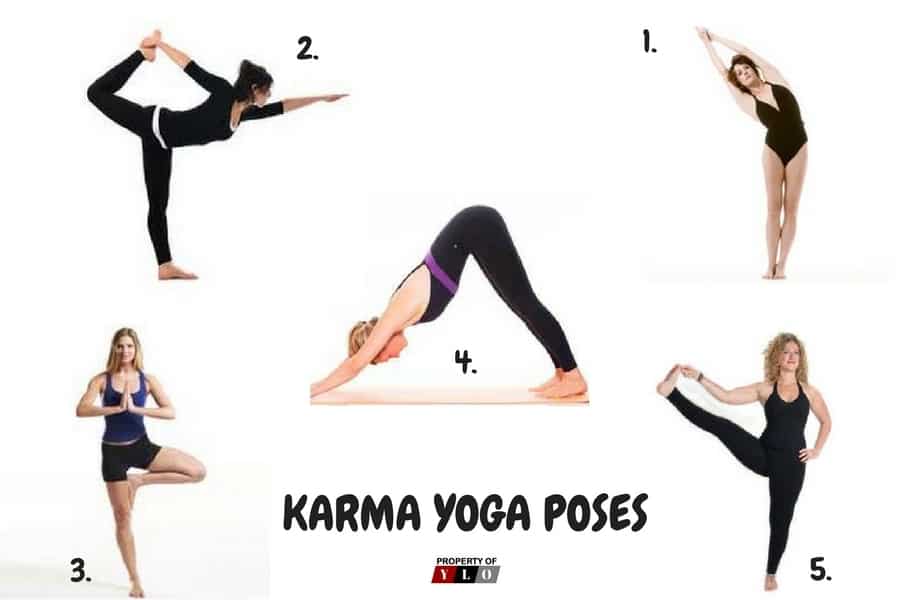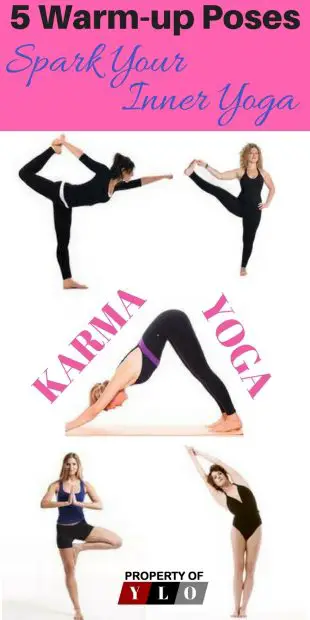Vedic Philosophy left us with a lot of important teachings, but the most integral of them all was perhaps Karma Yoga – the art of getting to know oneself through unselfish action. This practice is done with the pure intention of helping others. Popularly known as the yoga of action, the philosophy behind it teaches one to let go of egotism and malicious ambition; for it is only then that they can begin the journey to expand and purify their hearts and minds.
What Is Karma Yoga? What Are The Benefits?
Yoga is one of the oldest forms of exercise, meditation, and a way to become spiritually enlightened originating in India. Like other exercises, there is not one form of Yoga much like in martial arts and others. Yoga is divided more by mental thought practices and forward thinking benefits. While the ideas are very similar, the styles can have some variations from type to type.
All types of Yoga do include many of the same basic positions, but, details such as hand placement and breathing techniques while in a pose are two of the many differences. All, though, are aimed at accomplishing a certain objective. This can be physical, such as a strength gain and building lung capacity. It can a mental objective just as the enlightenment of the mind and body. Lastly, it can be a spiritual benefit such as personal or community benefits.

Karma Yoga
Karma Yoga is a very old form of yoga and is talked of in ancient texts such as the Bhagavad Gita. Hatha Yoga concentrates mostly on the physical attributes of Yoga while Karma Yoga is a spiritual path. The key for Karma Yoga followers is to “Become Accomplished In Every Action.” This involves moral living, less focus on personal accomplishments or possessions, and helping others.
Swami Vivekananda Explains Karma Yoga In A Nutshell
The Benefits of Using Karma Yoga
This practice has been in existence for thousands of years, and day after day, more people continue to buy into it. Karma yogis who take this practice seriously can attest to the fact that it is very beneficial, first to the mind, and consequently to the body.
• Selflessness
In today’s world, it is rare to find anyone willing to work for no reward. It is understandable, but most times, people get caught up in the allure of the benefits awaiting them such that they forgo the duty to handle their responsibilities as they should be handled. With Karma Yoga, the practice of selflessness is taught. In any service, no matter how small, this yoga style teaches people to focus on perfecting the result for the benefit of others rather than for their gain.
• Commitment
Fear, effort, criticisms these factors are known all too well by everyday people. When something gets too complicated, or rather, too technical, a good number of individuals will opt out. This applies in business, in relationships, and in the little actions that drive our lives. Karma Yoga frees the mind from seemingly immovable obstacles and encourages a person to give only their best, regardless of whether someone is watching them or not.
• Pure Intentions
Feelings of hate, jealousy, and ego have been around since the beginning of time. This does not necessarily make them good qualities. People struggle to be tolerant and humble every day so that they can fit in. With Karma Yoga, yogis can be taught to develop their inner strength to withstand the temptation of falling into negative emotion. This practice helps with anger and pain by giving those who practice it a broader perspective on life.
Why Karma Yoga Is Preferred Over Other Yoga Styles
There are plenty of other yoga styles that are recommended for different audiences, from Bhakti Yoga, Hatha Yoga and Mantra Yoga to Purna Yoga and Gyana Yoga, but Karma Yoga ranks among the top for many reasons:
• It has existed for hundreds of years
This practice is trusted and dependable. It has been passed down from one generation to the next, making it a solid foundation in the yoga community.
• It is effective
There are a lot of yogis who can attest to the results of this practice. It takes time to convince one’s actions to be selfless and pure, but Karma Yoga achieves results.
• The achievement of perfect balance
Balance is the key to everything. The yoga of action stresses this concept, encouraging yogis to balance their activities, whether it is sleeping, walking, eating or working, with their personalities.
• It enhances the mind
It has long been known that the enhancement of the mind results in the enhancement of the body. With Karma Yoga, yogis broaden their perceptions of life and service, hence putting them on a path of happiness and fulfillment.
Who Should Use the Karma Yoga Style?
Yoga is not just for bored house-makers and patients with lower back pain. It is a practice that far surpasses the physical needs of human beings. Karma Yoga, in particular, is suitable for anyone who wishes to get in touch with themselves. The ultimate intention of this yoga is to unite individual consciousness with the consciousness of the world. Yogis who use this kind of style are everyday people that seek to make a difference; be it by helping a foreigner learn the language and the ways of one’s native country, or by cleaning up the beach just so it is safer. This yoga practice pays no regard to age, gender, or occupation.
Karma Yoga as described in YogaPedia
Karma Yoga: Do Yoga, Do Good — an article in Yoga Journal
The Quickest Way to Get Started With a Karma Yoga Program
It is easy to get started with the practice of this yoga. All one has to do is be prepared to go within themselves and discover who they are. The aim of the many programs that are provided by teachers of Karma Yoga is to help yogis open their eyes and see past their selves. Programs are available locally and on the internet, and sometimes signing up for them takes less than a minute.

Karma Yoga Poses
Karma yoga devotees will not find a set of poses to practice as with other styles. Karma yoga rather concentrates on the needs of the individual what might help them the most. Karma yoga poses are used to elevate the users to a higher level of living. Due to this fact, usually, the easier poses are chosen. This allows the users to focus more on their mind. The more difficult poses require so much thought and physical effort that Karma devotees cannot complete them and still practice the spiritual concepts of their style.
5 Popular Poses Used in Karma Yoga
1. Standing Crescent Pose
This is a simple pose that does not require much flexibility.
The yogi has to form a crescent shape with their body by bending on their side and outstretching their arms.
2. Lord of the Dance Pose
It is a symbol of respect that is characterized by the forward bending of the body while balancing on one leg.
The raised foot is bent over the back and held in place by both arms.
3. Tree Pose
This yoga pose includes a backbend. The yogi has to stand on one leg with the other leg folded above their standing knee. Their head is bent backward, and their arms are folded, as if in prayer.
4. Downward Facing Dog Pose
Here, the yogi starts out with their whole body to the floor, but they have to lift their torso and form a V shape with their body, holding the position for several breaths before they repeat the process.
5. Hand to Foot Pose
This pose also requires that one leg is lifted off the floor and stretched straight. The arms should be parallel to the straight leg, and the body should be balanced on the other leg.
These poses and the many others that are used have one goal – to make the yogi meet their karma. They push an individual to tread the thin line between surrender and will, hence pushing them towards wisdom and intelligence every time they make choices. These poses teach that it is only through practice and reflection that one can evolve and expand their awareness.



